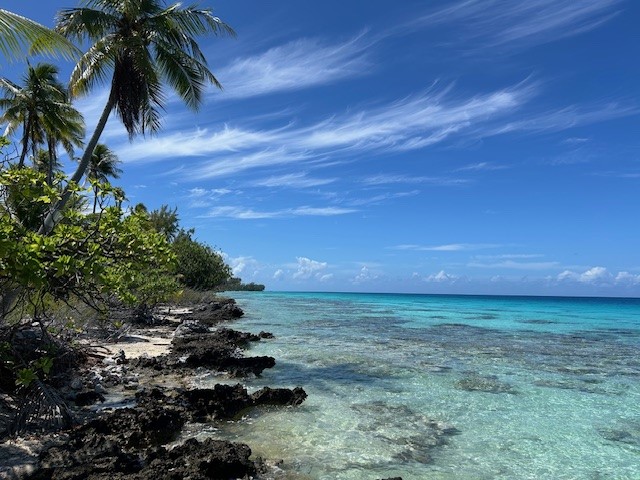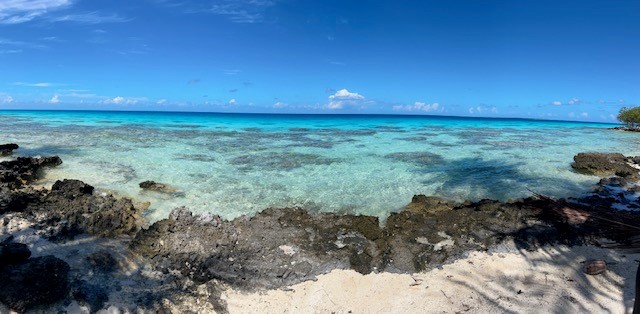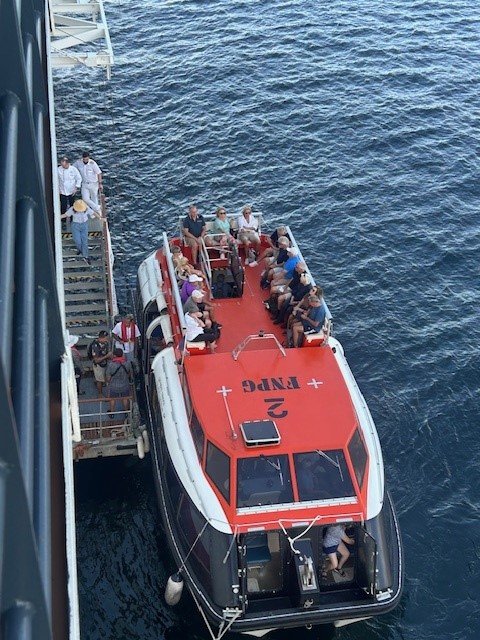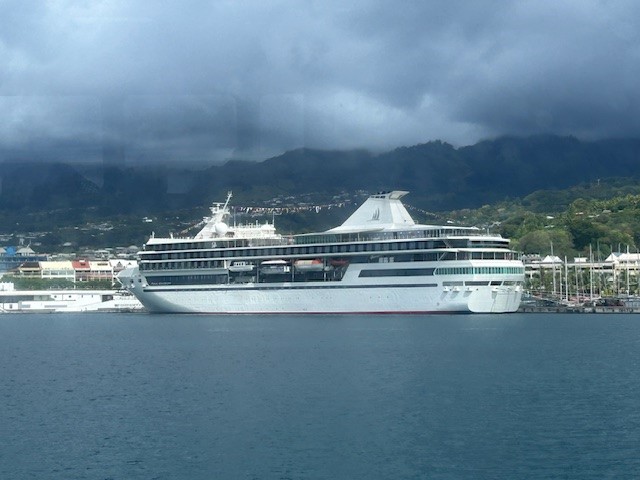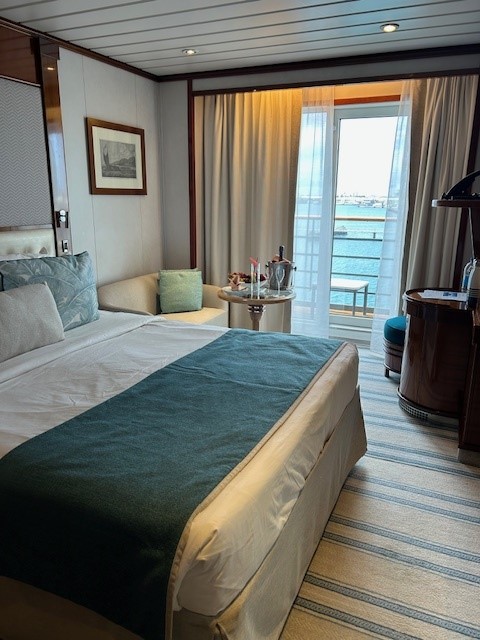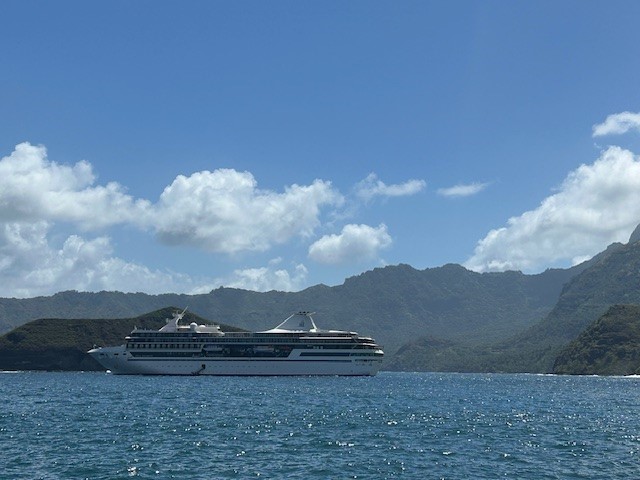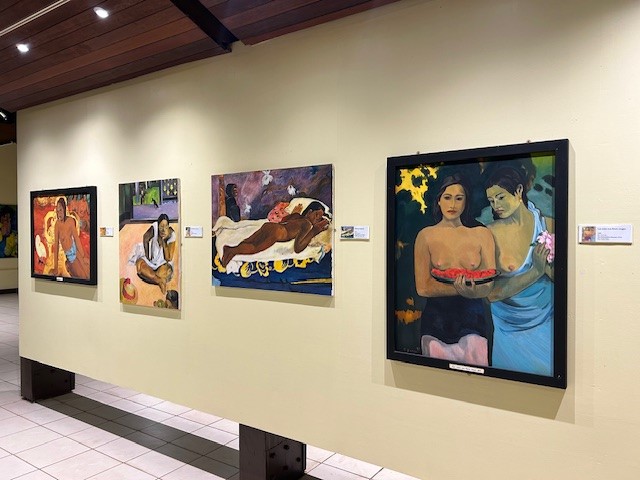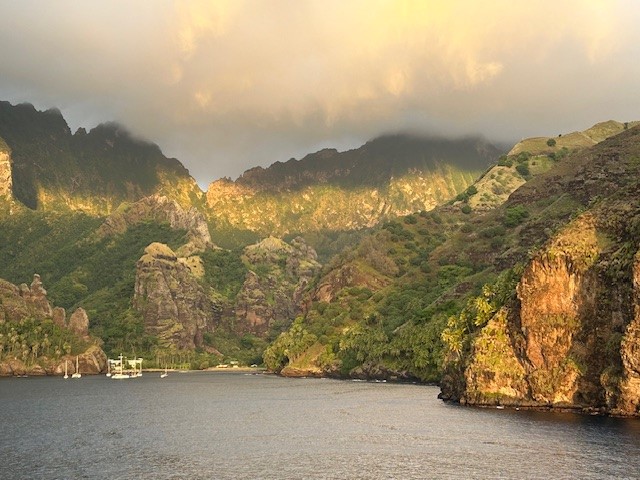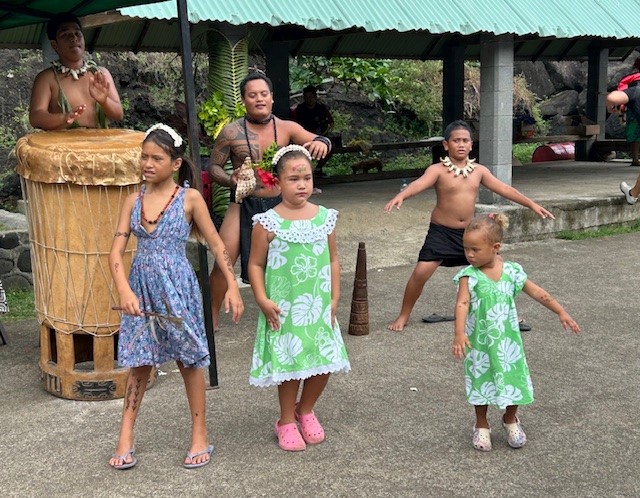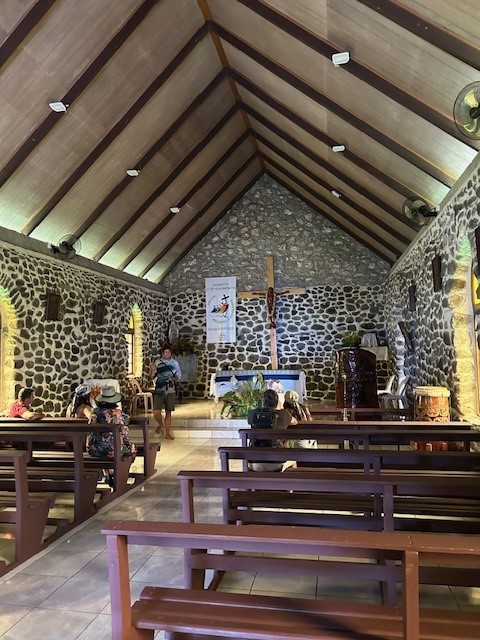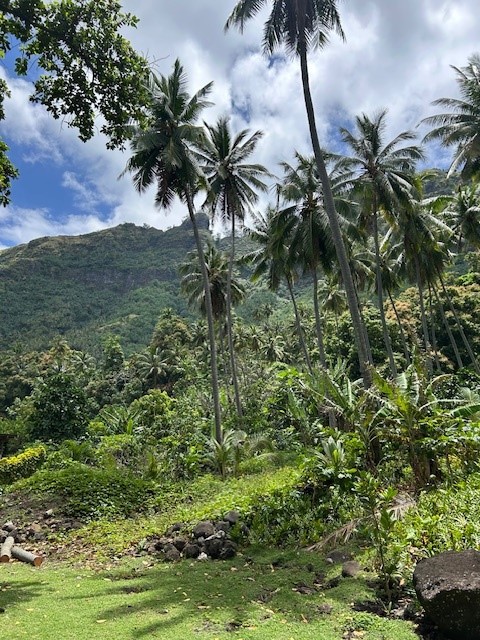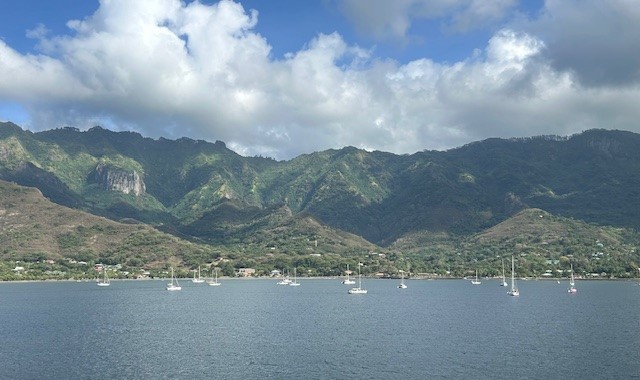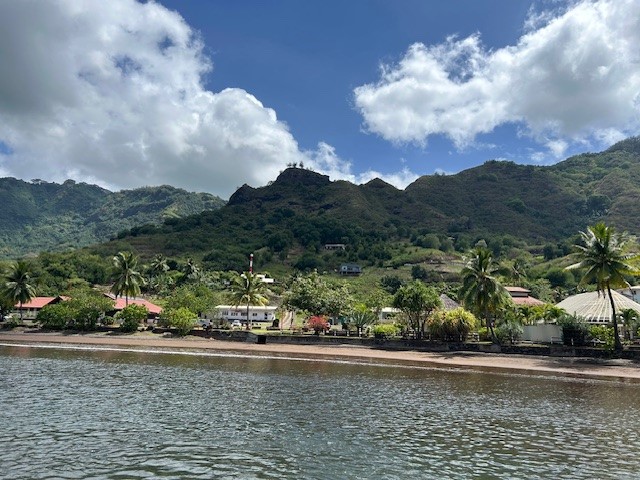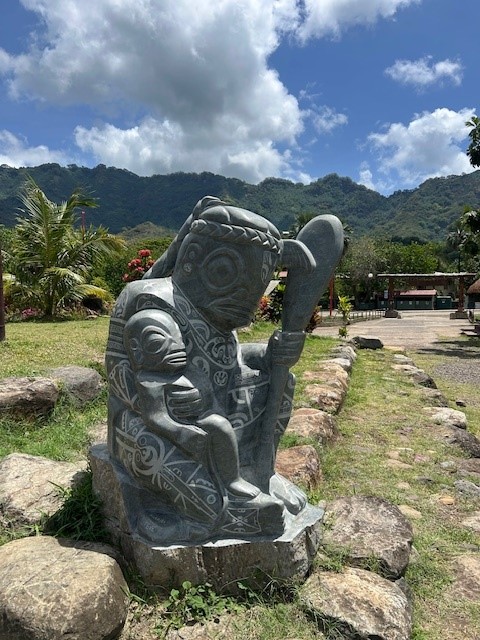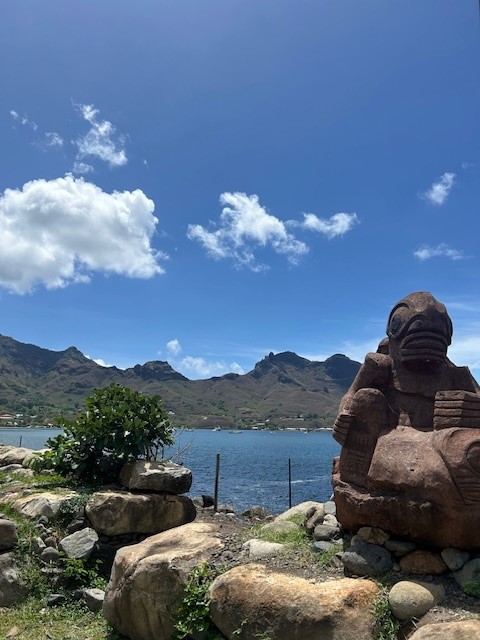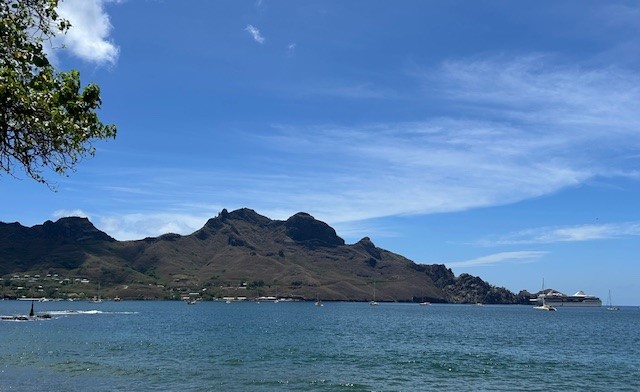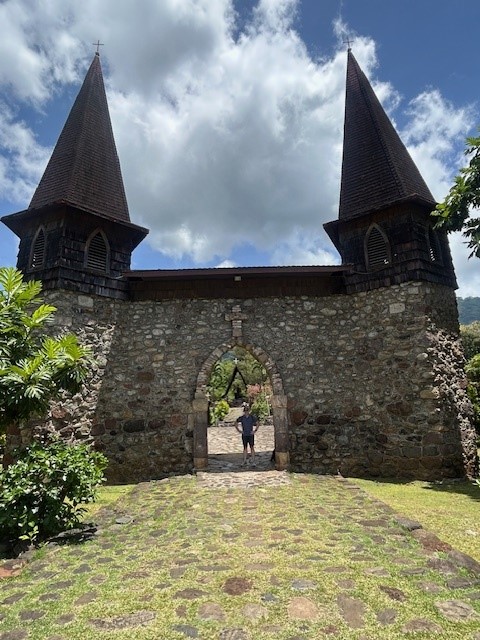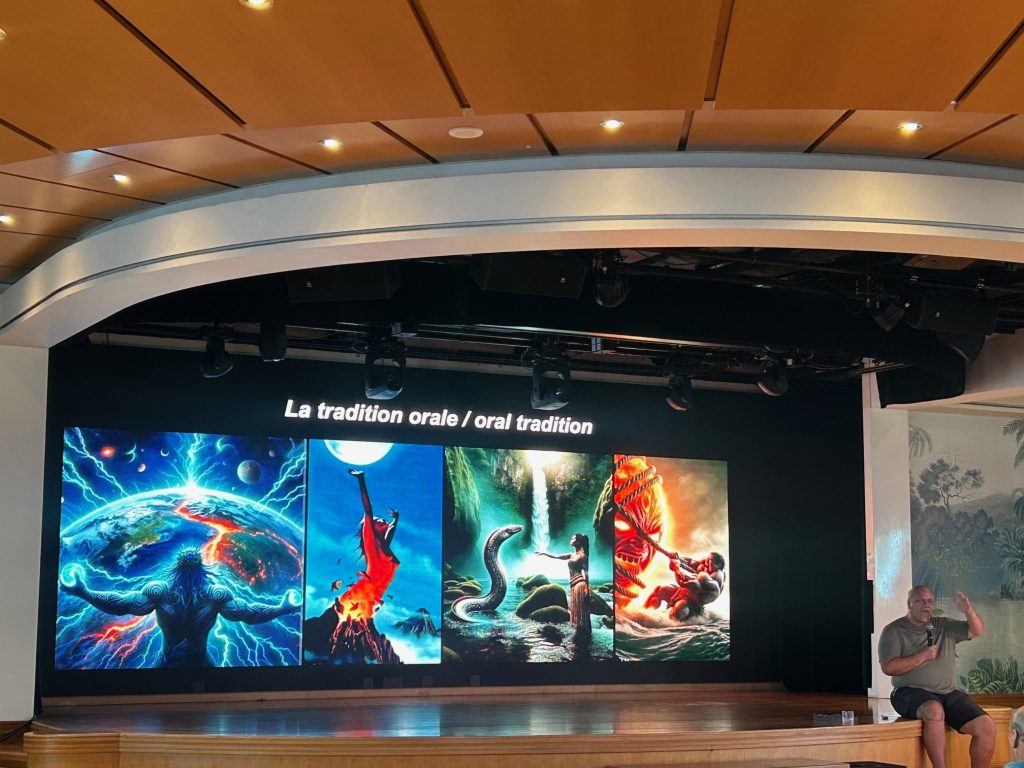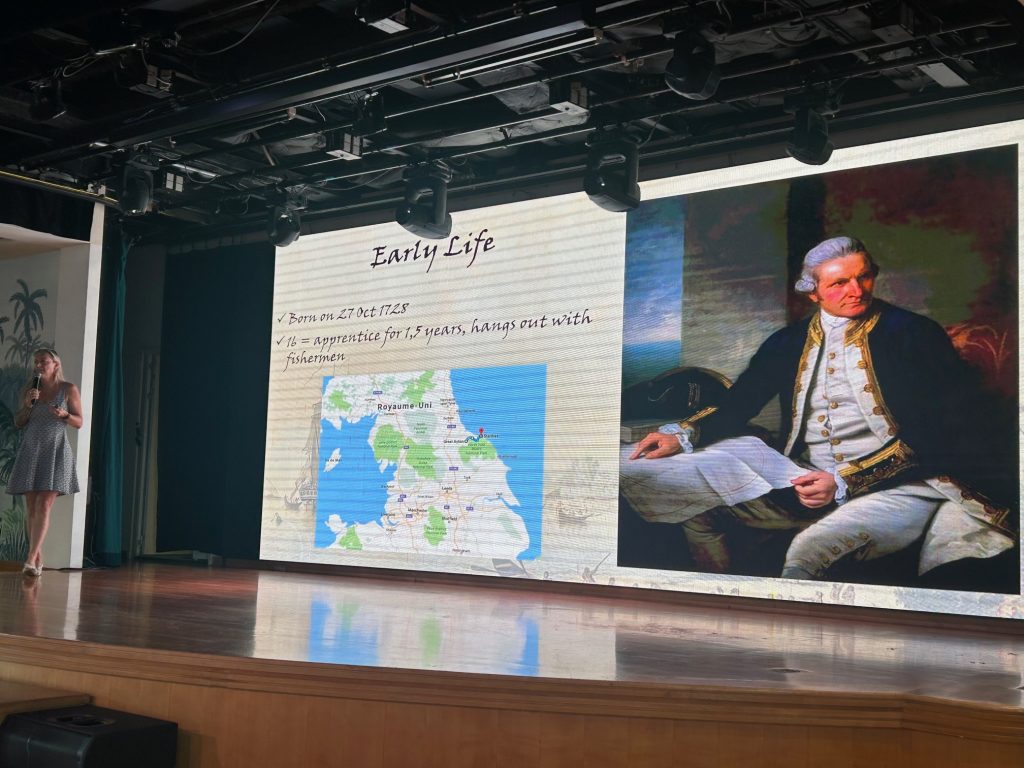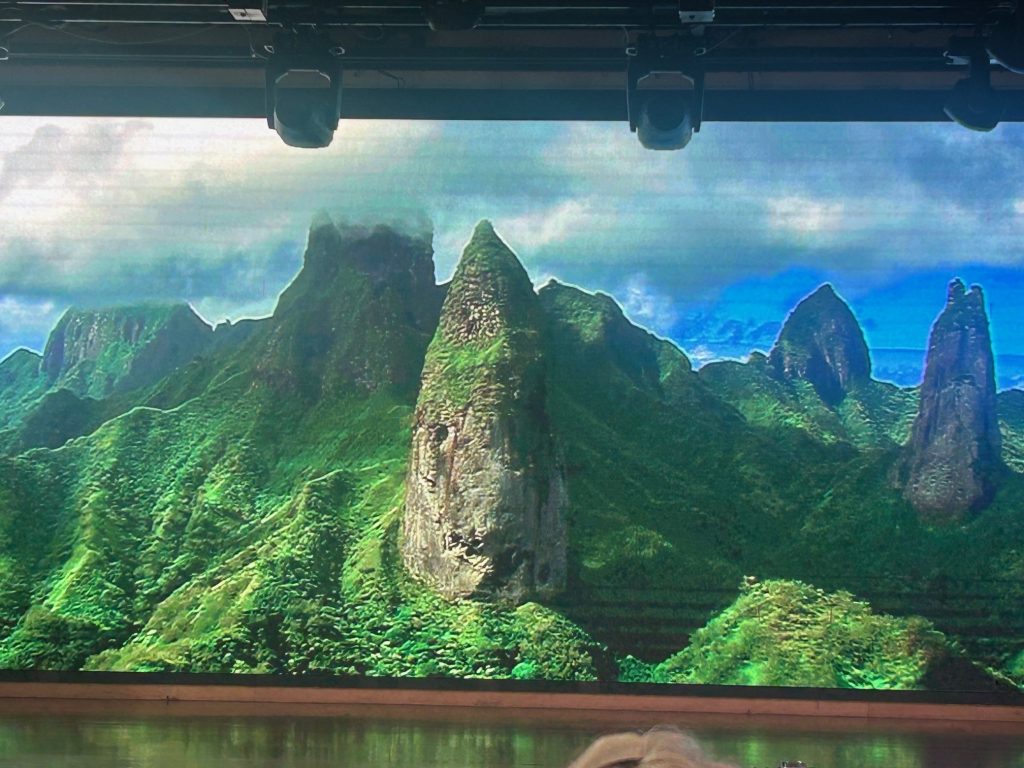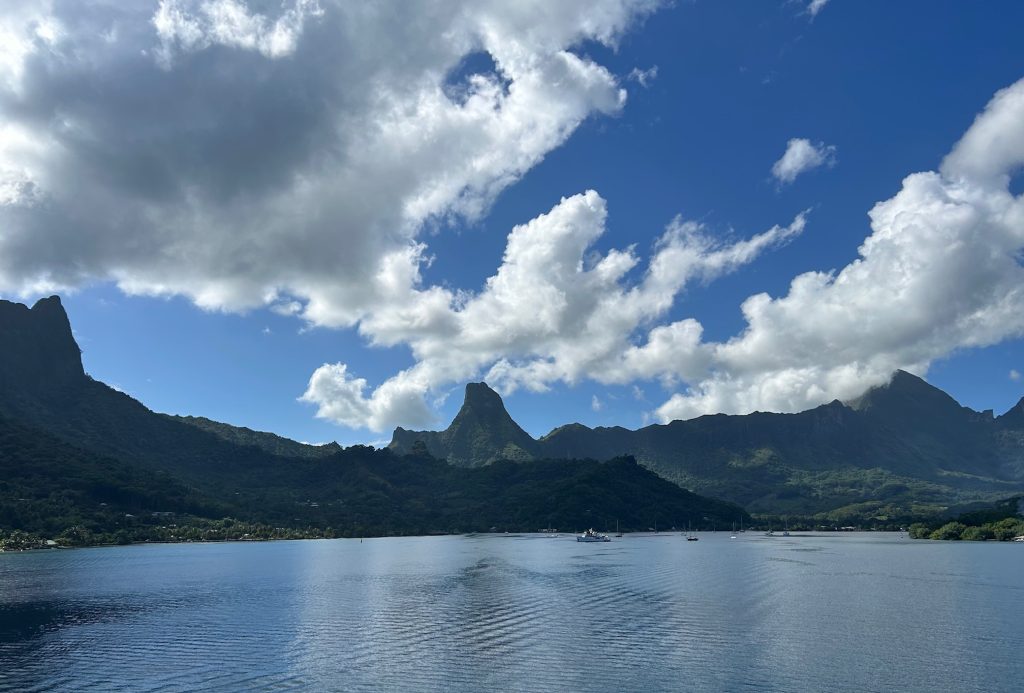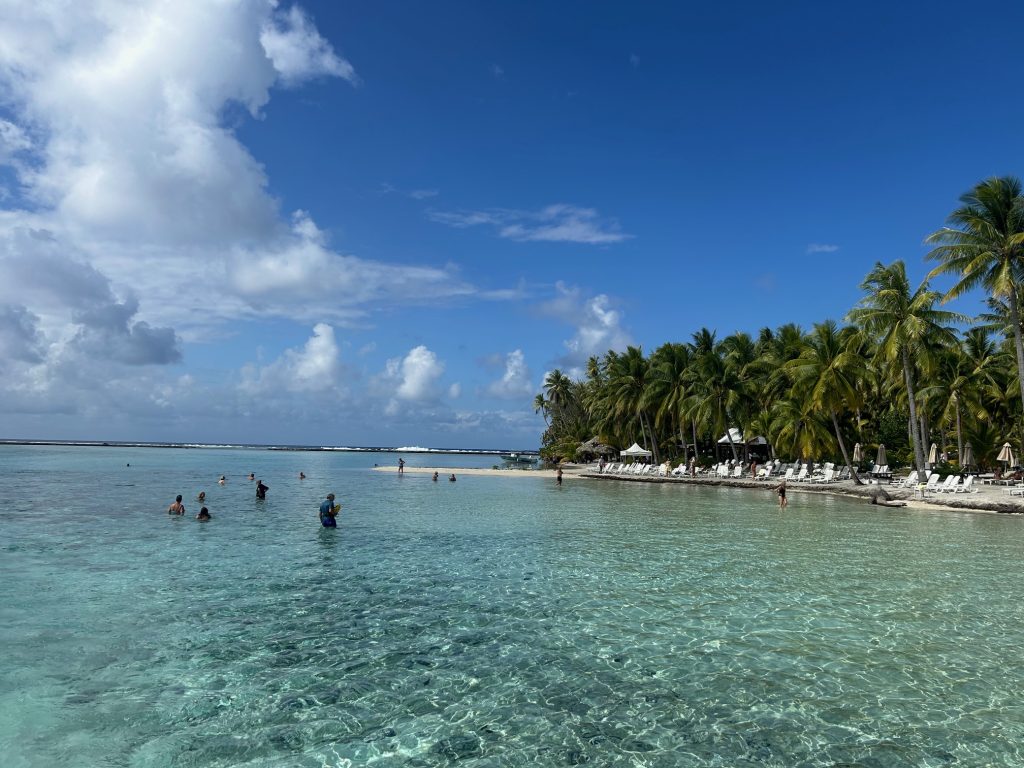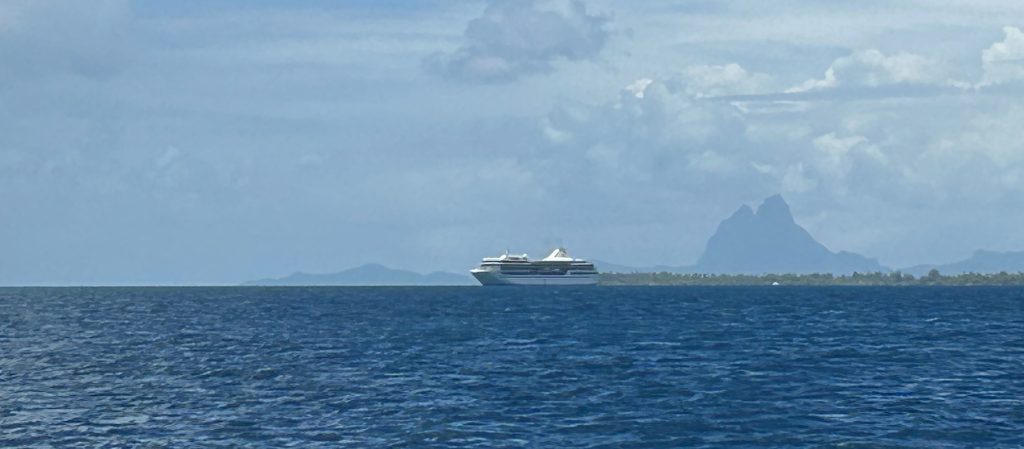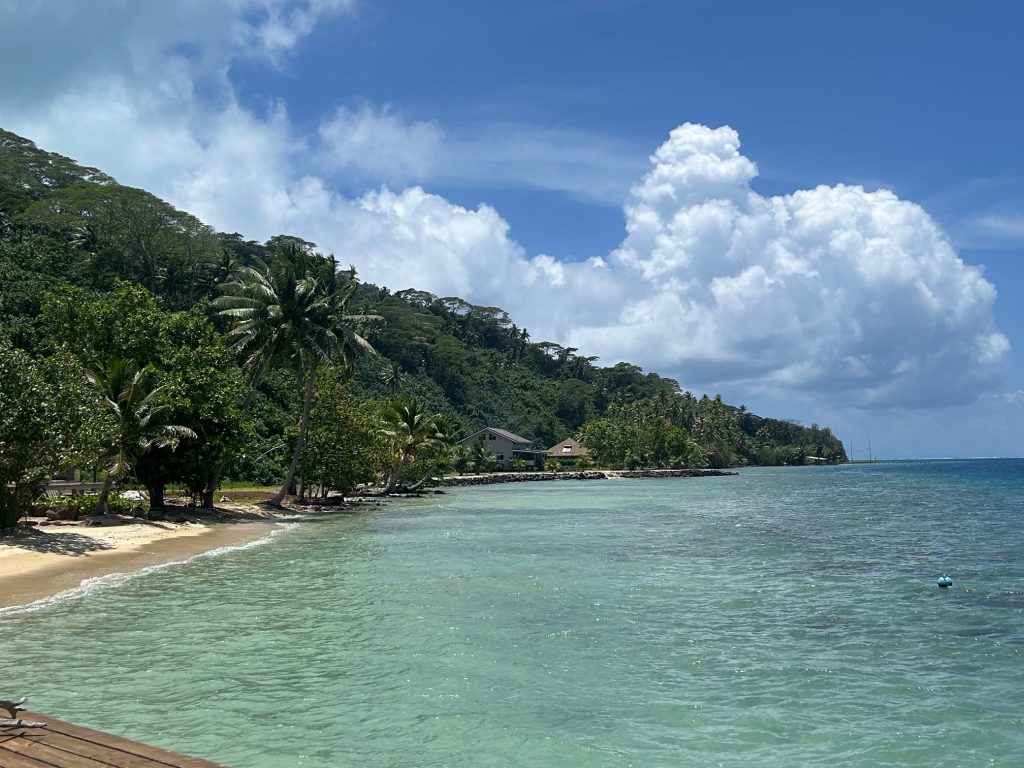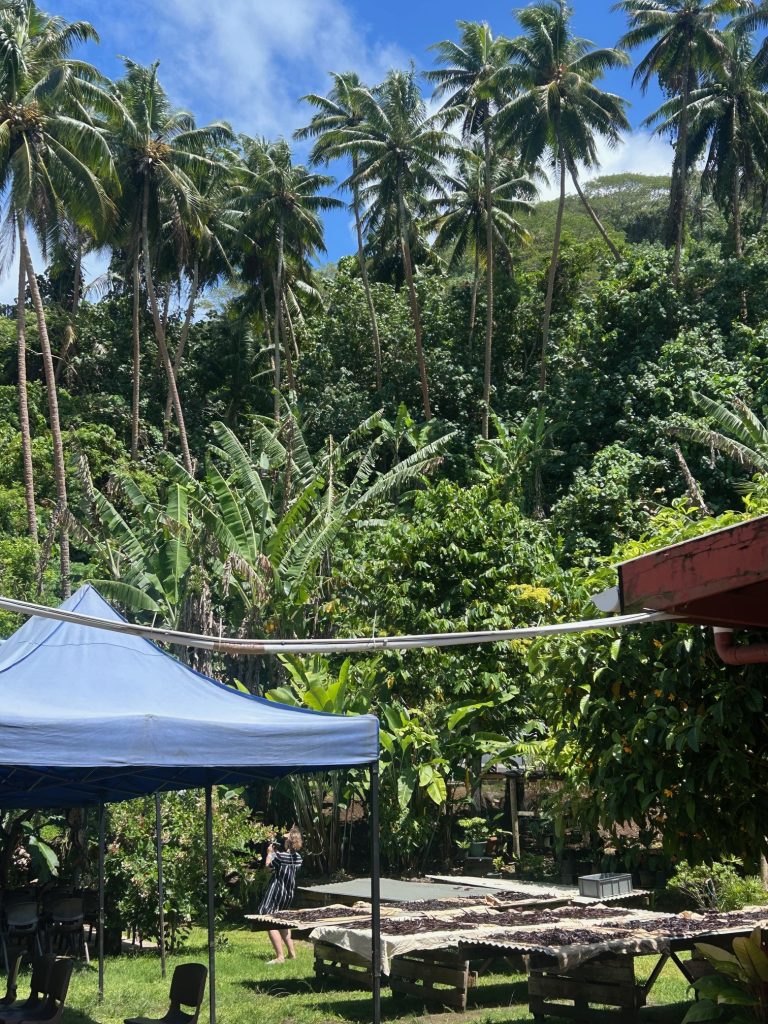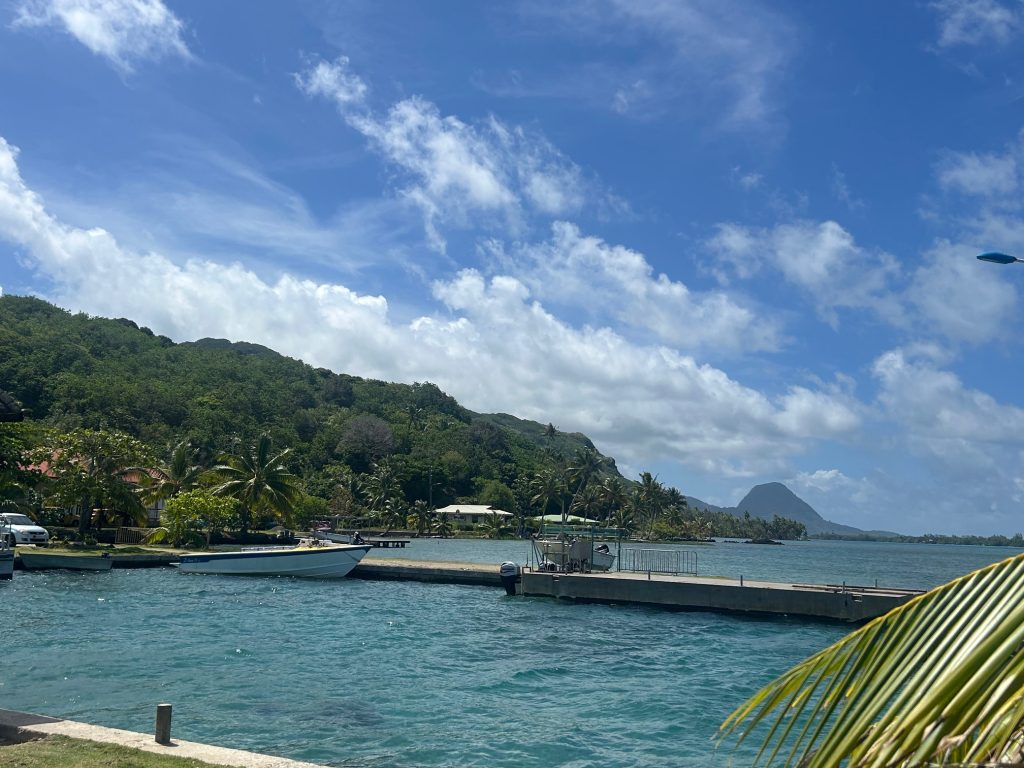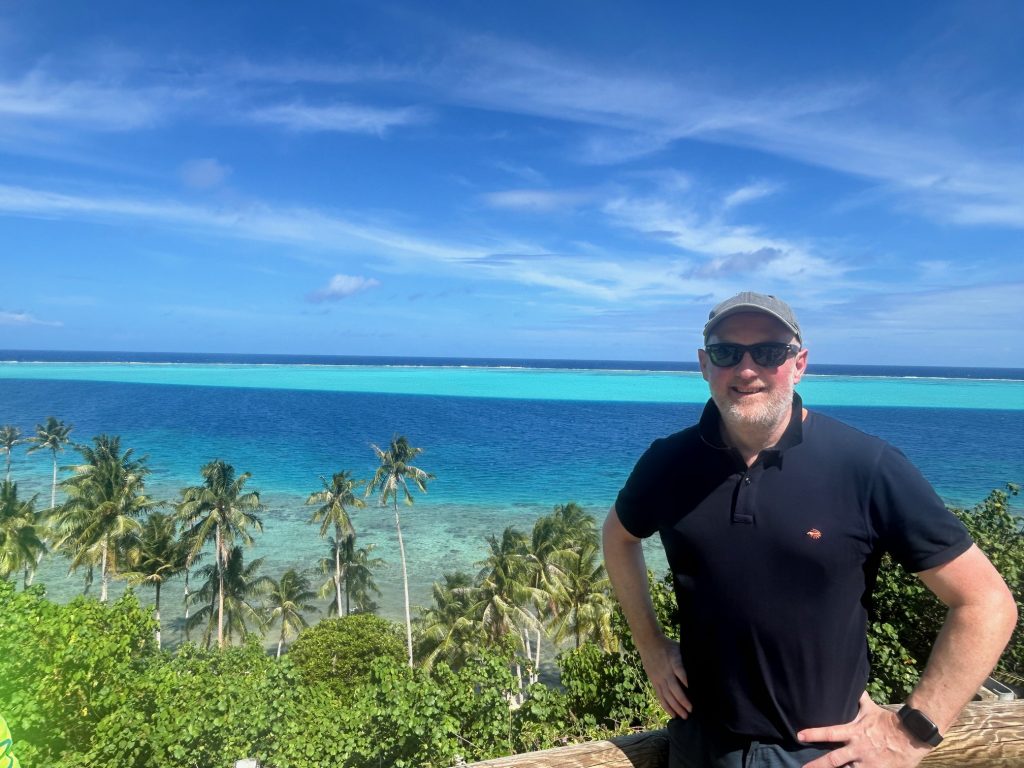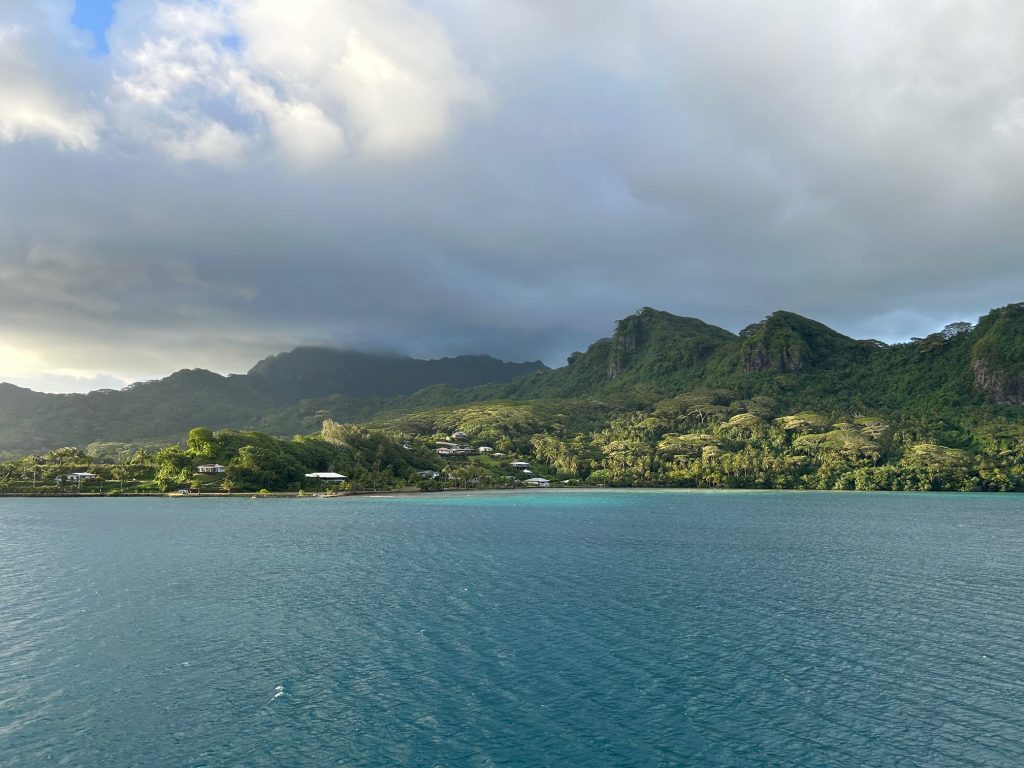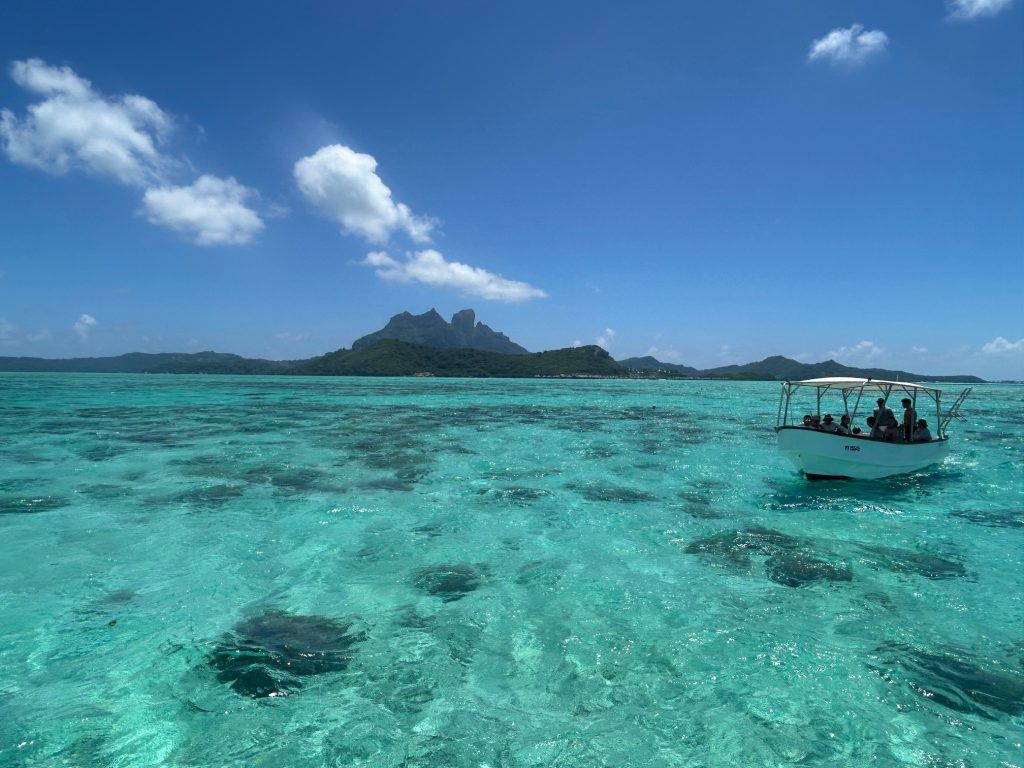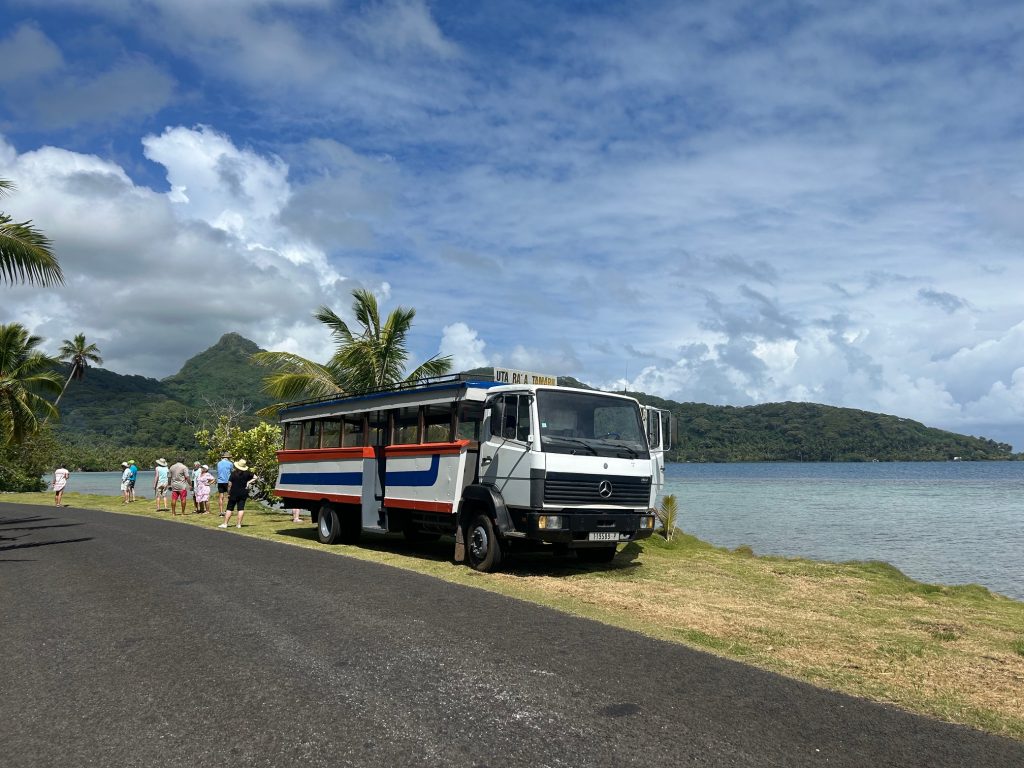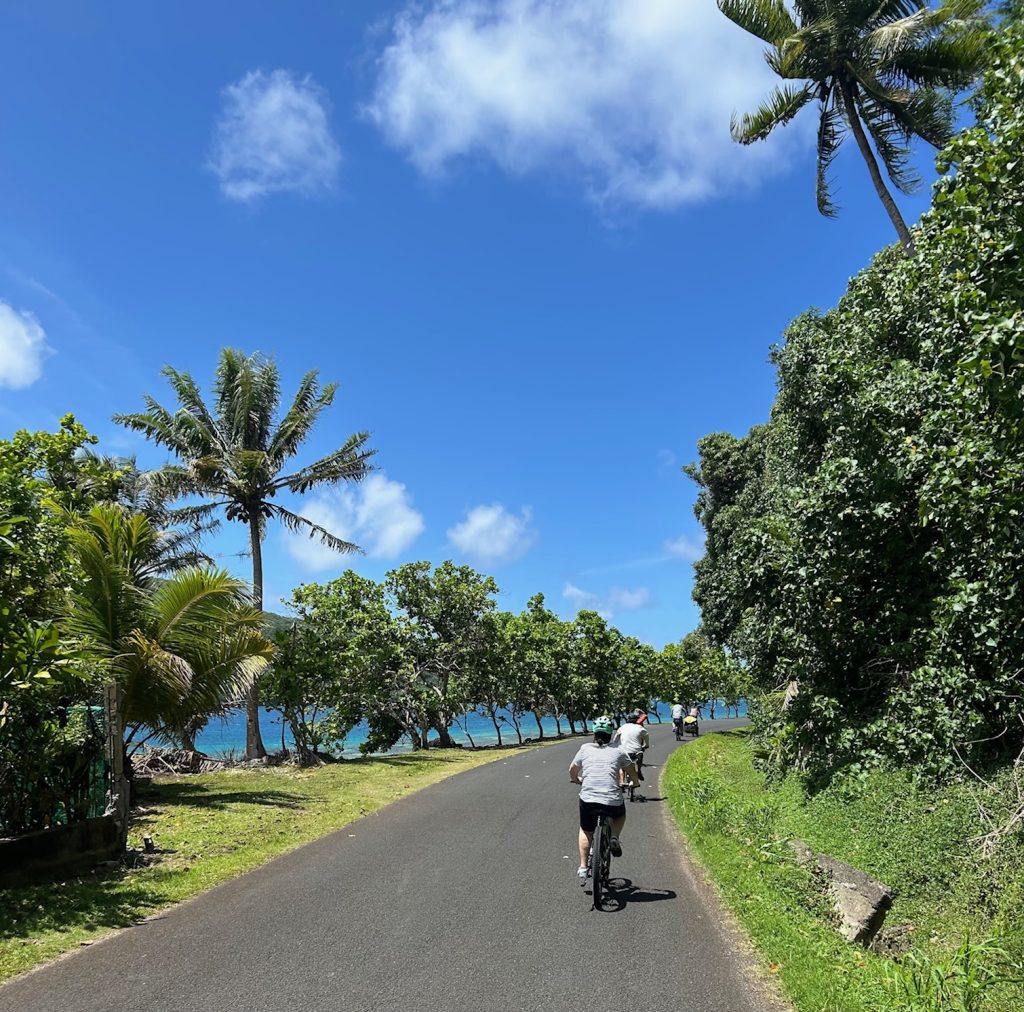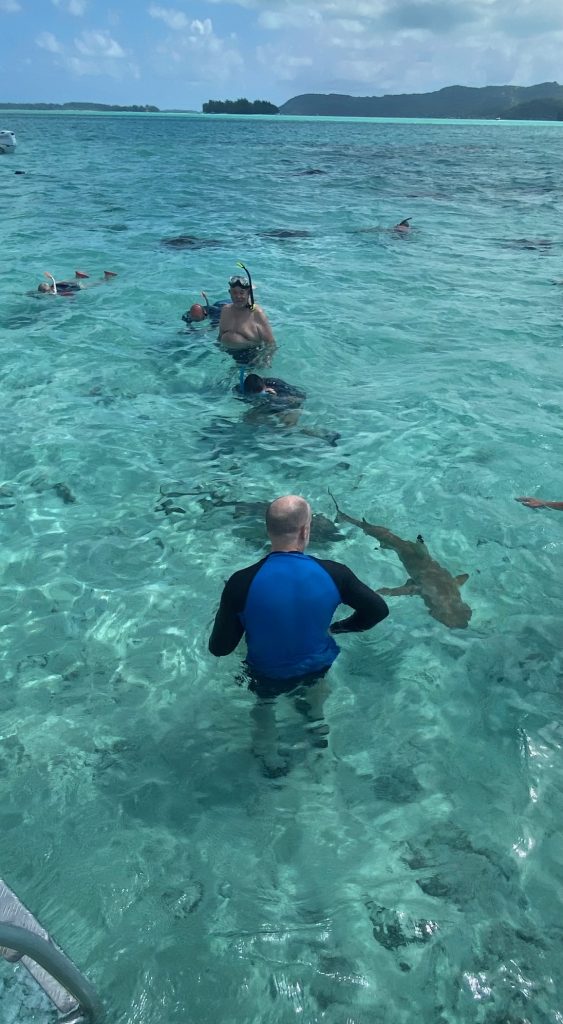Cruising French Polynesia : The Tuamotus, Marquesas & Society Islands
Bonjour and Ia Orana!
French Polynesia’s very remote Marquesas Islands have lived in my imagination since I was a child as one of those impossibly exotic destinations that it would be a dream to visit one day, and I can’t imagine a better way of doing this than aboard Ponant’s small luxury cruise ship Paul Gaugin.
I’m currently nearing the end of a remarkable 14 night voyage that started in Papeete, Tahiti, called for a day into the spectacular atoll of Fakarava in the Tuamotu Islands before making visits to four of the Marquesas Islands – Fatu Hiva, Hiva Oa, Tahuata and Nuku Hiva. We finish with visits to four of the better known Society Islands (Huahine, Bora Bora, Taha’a and Moorea).
The Paul Gaugin was launched in 1997 and refurbished recently, so is looking smart despite her advancing years. She was designed specifically to glide in luxury through the shallow seas of the South Pacific and takes a maximum of just 330 passengers, 70% of the staterooms have a balcony. We’re in a balcony stateroom on Deck 6 and there’s plenty of space to unpack our stuff. There are 2 fine dining restaurants on board; L’Etoile and La Verandah and a more casual outdoor seating restaurant called Le Grill. Dress code is relaxed during the day, then ‘country club casual’ at night in two of the dining venues, so a collared shirt and slacks for gents, no jacket and tie is required! There are three themed ‘sail away’ sundowner deck parties on our voyage – a slightly more formal captain’s welcome dinner, a ‘white’ night and a ‘polynesian’ night, so there’s plenty of scope to get creative with dress choices. The Polynesian night is the most fun; it’s in Bora Bora and locals come aboard the ship to make flower crowns and necklaces to compliment everyone’s colourful attire.
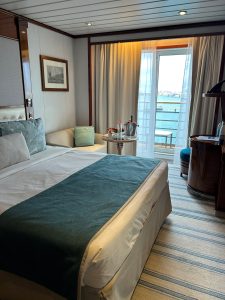

Being a French ship, around two-thirds of the guests on this longer voyage are French, and most of the remaining third are English speaking, with Americans & Canadians making up the majority. I’m advised that on the shorter (one week) Society Islands-only voyages, English speakers tend to make up at least half the guests. Like other ‘expedition’ cruises, there’s an open bridge policy for much of the voyage so we can check out the navigation charts and chat to the officers.
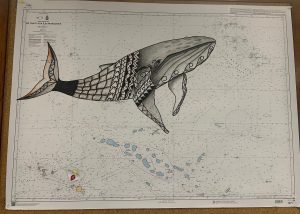
Of course, being a French ship, the food & wine (especially champagne!) is plentiful, beautifully presented and spectacularly good. Even the buffet breakfasts and lunches are amazing, so meals inevitably become an anticipated part of every day. Special mention must go to the Filipino staff on board though, who are absolutely incredible. We’re a full ship, but there’s a very high staff/passenger ratio and so within minutes of boarding the ship in Papeete they had memorised everyone’s names and drinks preferences, and consequently the service is truly 5*. They perform a ‘crew talent show night’ and everyone is blown away by how good this is. Our daily routine also evolves to include a morning trip to the small but well stocked gym to try and somehow stave off some of the calories, an effort which is then usually undone by indulging in a pre-dinner glass of champagne in the piano bar and after dinner drinks in the La Palette lounge!
As there’s four ‘at sea’ days on this voyage, there’s also an opportunity to attend lectures given by our two brilliant lecturers, who are Cecile Manet from France and Pascal Erhel, a local Marquesan, on the history & culture of French Polynesia. We learn it’s roughly the same size as Europe or the Amazon, about 5 million square kms, and made up of 118 islands. It’s home to about 280,000 people in 48 communes, but of these, only 10,000 people live in the Marquesas islands. The first Europeans, a Spanish expedition under Alvaro de Mendana de Neira, stumbled across fatu Iva in the Southern Marquesas in 1595 and named them after his patron, the Marquis of Canete, the Viceroy of Peru but that didn’t go well, the Spanish killed 200 people and their settlement was then abandoned.
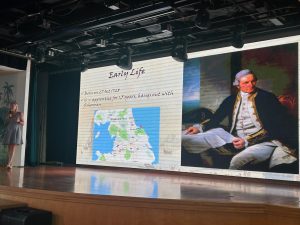

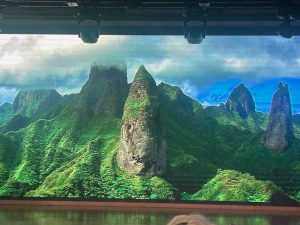
Subsequent expeditions by the Dutch, British & French in the 17th & 18th centuries mapped out more of the islands of what we now know as French Polynesia before Captain Cook’s first circumnavigation voyage aboard the Endeavour arrived in Tahiti in April 1769. He was there to observe the astrological phenomenon known as the Transit of Venus, started to cultivate friendships with the indigenous people and took a local navigator Tupaia on board. He mapped Tahiti and Moorea very accurately. Cook returned to Tahiti in 1773 where he spent a week in the Marquesas and mapped Hiva Oa.
After Cook, the French merchant Marchand claimed Nuku Hiva in the northern group of the Marquesas for the king of France in 1791, not knowing that the French revolution had happened 2 years previously! The native population by 1800 was around 80,000, disease would decimate this to just 2,000 by 1920 when vaccines were finally introduced and there was a slow recovery. The French took possession of the islands in 1842 and the first catholic bishop arrived in 1848, also bringing French laws and education. The impact of catholicism was profound with the church remaining the centre of village life. Tahiti itself wasn’t colonised by the French until 1880. Paul Gaugin, the famous French painter after whom our ship is named, arrived in 1901 and spent two spells in the islands until his death in 1901. Big change came to the region after WW2, with French nuclear testing in two Tuamotu atolls from 1966-1996 and a lot of French money arriving in Tahiti. Until the 1960s it was not legal for the islanders to speak Marquesan languages or wear traditional tattoos but there’s been a renaissance in the culture since the late 1970s.
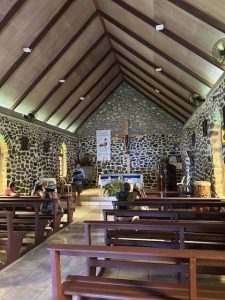

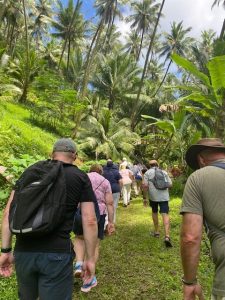
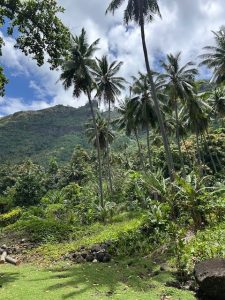
The Marquesas or ‘Fenua Enata’ (literally ‘line of men’) are roughly in the middle of the Polynesian triangle formed by Hawaii in the North, Easter Island in the East and New Zealand in the West. We learn that linguistically, there are similarities to Maori and Hawaiian dialects. They were first settled by Polynesians around 300AD and are so remote that they have their own time zone, 30 mins ahead of the rest of French Polynesia. They receive only 17,000 tourists each year, most by cruise ship and remain an ‘overseas collectivity of France’ under French administration and part of the French republic, this influence is very evident today in the infrastructure, language and cuisine and a strong sense of pride in their French heritage.
As there are no docks in the Marquesas, the Paul Gaugin drops anchor in sheltered bays in each of the four islands we visit and shore excursions are undertaken by ship’s tender every 30mins from ship to shore and vice-versa. At Fatu Hiva, which is covered in abundant tropical forest, we come ashore in the little fishing village of Omoa, where we take a walking tour to the Maison Grelet to view wooden sculptures and local works of art. In Hiva Oa, the ‘garden of the Marquesas Islands’, famous for its craggy skyline and black sand beaches, we visit the little village of Atuona, home to the tomb of Gaugin and a cultural centre devoted to his memory. On Tahuata island, we explore the village of Hapatoni and its beautiful cathedral and are welcomed with traditional song and dances by the locals. Our final stop is at Taiohae on Nuku Hiva island, with black sand beaches and the famous Notre Dame Cathedral of the Marquesas, built by stones sourced from each island.
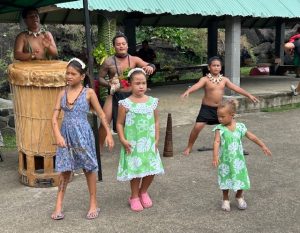
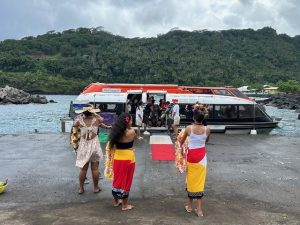
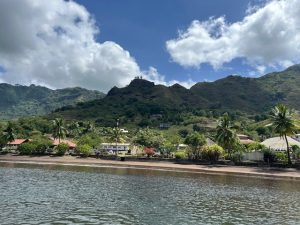
We then put our clocks back 30 mins as we arrive back in the Tuamotus and sailed past the dramatic atoll of Makatea, with limestone cliffs 80m above sea level. it’s home to less than 100 people and like everything we saw in the Marquesas before is wild, untouched and fascinating.
The last four days of the voyage in the Society Islands fly by in an exhilarating blur of activities after the slower pace of the Marquesas. These are the islands beloved of French honeymooners and what most people think of when you say ‘Tahiti’ – incredible turquoise lagoons, white sandy beaches, ancient volcanoes and small islets called motus.
Our first stop is Huahine, the secret gem of the Society islands with its wild vegetation and remote creeks. We opt for a guided 27km e-bike ride around the smaller of the two islands, Huahine Iti. We learn a lot about life as a French expat in Huahine from our guide, explore the marae at Anini and swim at Avea Bay. it’s a pretty flat ride, but the e-bikes make navigating the short uphill sections and headwinds a breeze.
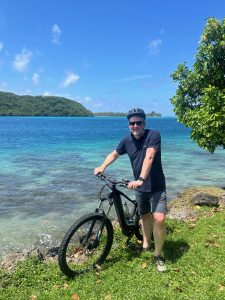


Our ‘sail away’ from Huahine is stunning, as we get great views of Maroe Bay at sunset with the ship’s Filipino house band ‘Santa Rosa’ entertaining the guests on the Pool deck.

The following day is probably the most anticipated of the voyage, as we have a full day in Bora Bora’s spectacular turquoise lagoon. There’s a bewildering array of marine activities on offer here, and we opt for the famous ‘Sharks and Stingrays Encounter’ which turns out to be one of the absolute highlights of this remarkable voyage. On our covered snorkelling boat we cruise past the ancient crater rim of Motu Toopua and then drop anchor on a shallow sandbank where we snorkel with little sharks and stingrays, it’s a magical experience. Then we continue onto a pristine coral garden where we see an abundance of tropical fish including parrotfish and butterfly fish.
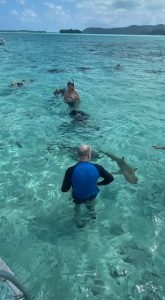
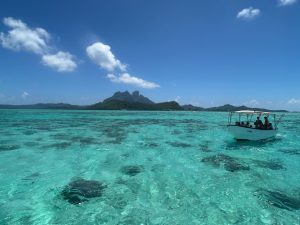
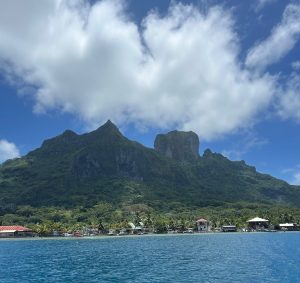
The next day, we’re in the lagoon of the volcanic ‘vanilla island’ of Taha’a, dominated by Mt Ohiri and Mt Puurauti, famous for cultivation of black pearls and vanilla. We opt for a half day cultural tour aboard the ‘Le truck’. Our guide takes us to a plantation where we learn about the very labour intensive cultivation that only accounts for 0.1% of global vanilla production but is of such high quality that means it’s in high demand from global gourmets.

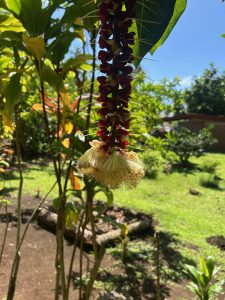

We learn about the creation of the Tahitian black pearl and then enjoy a real ‘surprise and delight’ moment as we are transferred by catamaran to Ponant’s idyllic private islet ‘Motu Mahana’ to enjoy a traditional Polynesian barbeque, kayaking and more snorkelling. It’s a perfect way to spend an afternoon in paradise and everyone’s reluctant to leave when the final ‘beacher’ tender picks us up in the afternoon.
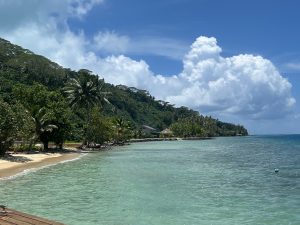
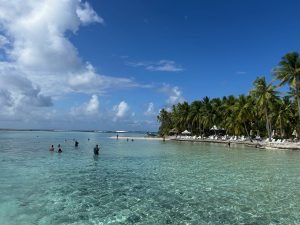
Our final day is spent in Moorea. Following our conversion to the joys of e-biking in Huahine, we opt to explore with a slower paced e-bike excursion to Belvedere and the Pineapple Valley, stopping at Cooks and Opunohu Bays, the Belvedere lookout and the pineapple plantations.
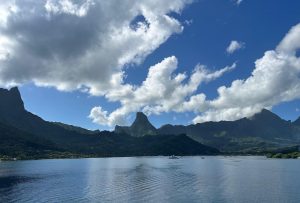
Merci beaucoup and Mauruuru roa to Ponant and the amazing crew of the Paul Gaugin for making this highly anticipated voyage so special, exceeding all expectations!
Curated journeys to suit every style and every one.
We have the world at our fingertips, let’s go and explore it.



